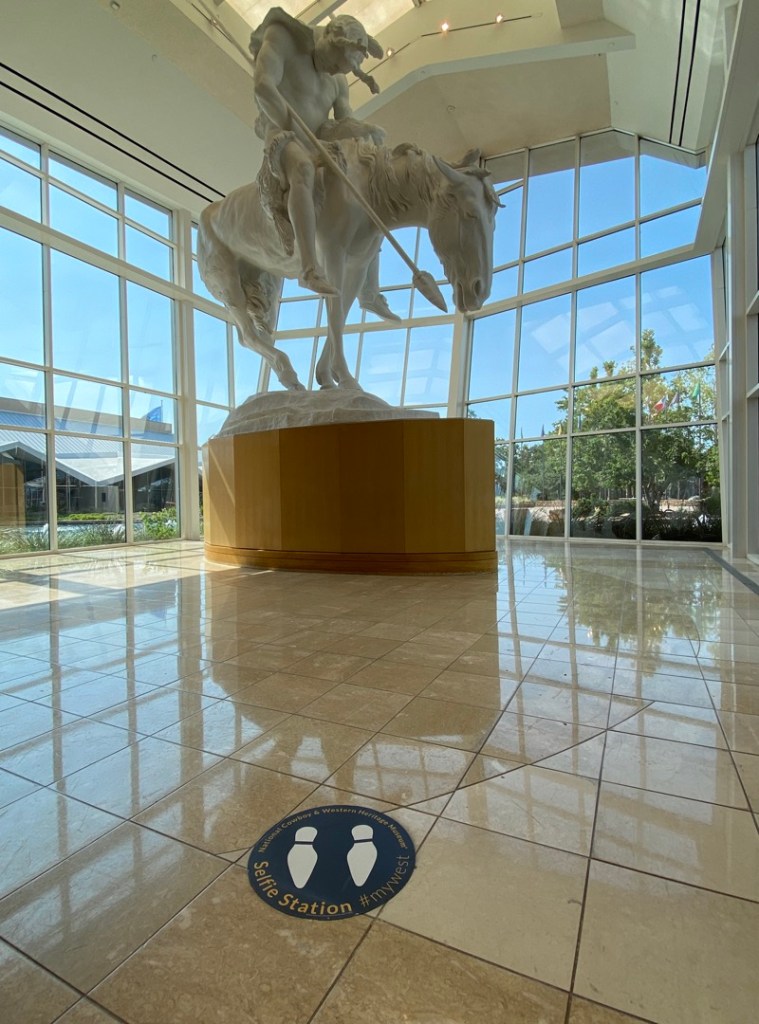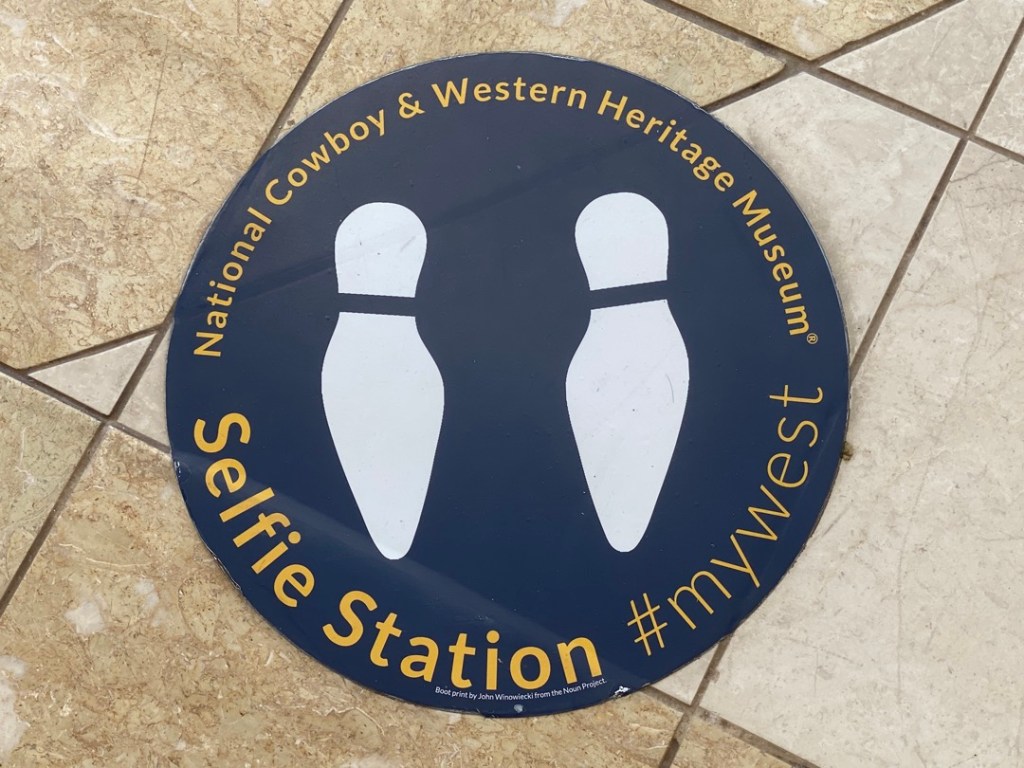
At the National Cowboy and Western Heritage Museum in Oklahoma City, a monumental bright white sculpture of an Indian slouched on a horse fills the end of the entrance hall. James Earle Fraser created “The End of the Trail” for the 1915 Panama-Pacific International Exposition in San Francisco, earning him a Gold Medal. It also became a popular image that signaled the end of a free people.
The Museum acquired the plaster statue from Tulare County (California) Historical Society, where it sat outside in a city park deteriorating for nearly 50 years. Now the restored statue is the centerpiece of this large museum and they’ve used this one object to hit a triple with visitors, to borrow a phrase from baseball.
Along with a typical label describing the sculpture’s creation, acquisition, and significance, it includes a Native American View in a second label of equal length by Dr. R. David Edmunds, a Cherokee. He states that the sculpture represents the popular view of “a nineteenth century Indian warrior defeated and bound for oblivion—frozen in time. By the 1890s, Native Americans knew their trail had become steep and rocky, but they believed it would continue.” The label continues to discuss the challenges and opportunities faced by Native Americans in the 20th century and that “being Indian has never been cast in stone. Today, Native Americans proudly ride forward on a trail into the future.”
The use of labels to provide multiple perspectives is not uncommon in art museums, but I haven’t seen it used enough in history museums. They are ideal places to show that events, places, and eras are experienced differently by different people. It’s an easy way to enrich interpretation without the need to create entirely new exhibitions or special events on women, African Americans, or Native Americans.
The Museum gets to second base by incorporating a third label for children, but it’s made mysterious to capture their attention. It’s smaller and positioned for their height, featuring just one question. The answer is printed below but hidden in a tangle of color than can only be revealed with a viewer that filters out some of the colors. These labels are found throughout the museum but I have to admit I didn’t see children using them—they found the objects far more fascinating and relied on their parents for the interpretation. Nevertheless, it’s nice to see a museum consider the needs and interests of a specific audience in order to engage them.
Finally, the 18-foot sculpture is an eye-catcher and the Museum saw that its popularity would continue in selfies. So they built on that interest to mark the best place to stand to take a photo and provided a hashtage. Increasingly museums have become aware they need to create “photo opportunities” to engage visitors as well as to aid publicity. Providing a spot on the floor is a terrific idea (and they appear elsewhere in the Museum).
I do wonder, however, if this monumental sculpture sets the right opening tone for the museum. It reinforces the harmful stereotype of the “proud savage” that was defeated long ago and is now gone. Is it any different from a bronze statue to a Confederate general astride a horse in a museum about the Civil War? What’s the message being conveyed? What do visitors think? Visitors rarely read labels and at the Museum, they’ve probably been pulled away by the other nearby exhibits before they’ve had a chance to read how the sculpture reflects one perspective and that the story is much more complicated. The National Cowboy and Western Heritage Museum needs to be bolder with the interpretation of “The End of the Trail” to overcome the symbolism of the image, and indeed, it may require more than words. Let’s aim for a home run.








Here is a different perspective on End of the Trail by artist Luis Jimenez. https://opublicart.org/sculpture/RSB_2005/RSB_2005_Catalog/1_Jimenez.htm
LikeLike
Thanks Michelle!
LikeLike